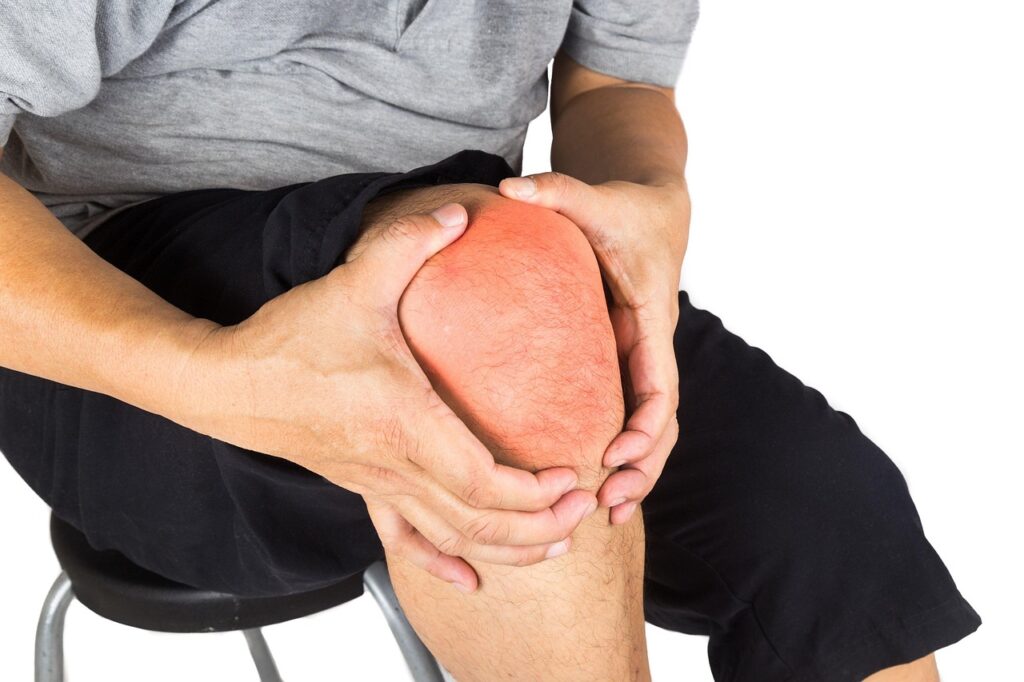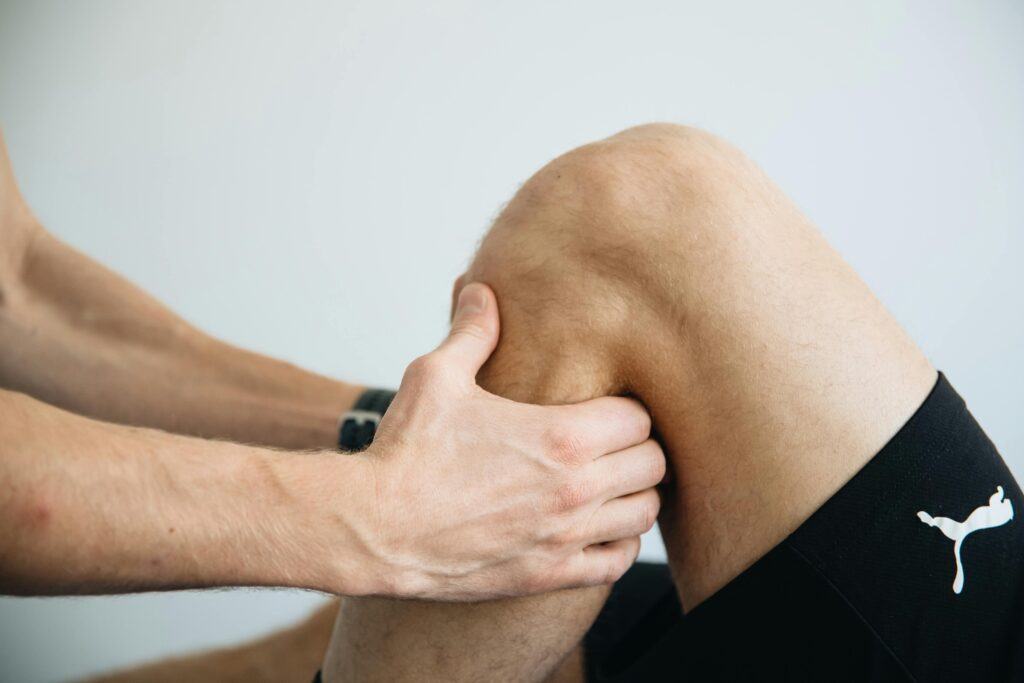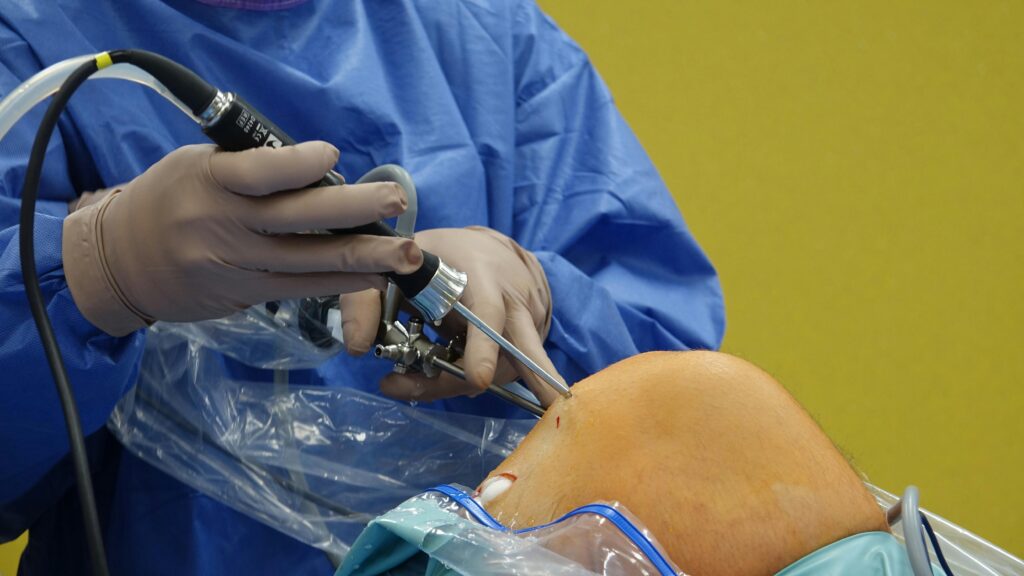What is the posterior cruciate ligament (PCL)?
The posterior cruciate ligament (PCL) is one of four major ligaments in the knee that stabilizes by attaching the femur (thigh bone) to the tibia (shin bone). It is located at the back of the knee and is responsible for preventing the tibia from sliding too far in the backward position. Although less commonly injured than the anterior cruciate ligament (ACL), PCL tears impose a severe functional and mobility effect on the knee.
Why PCL Tears Happen
PCL tears most frequently occur due to a direct blow to the front of the knee or hyperextension injuries. The most frequent causes are
- Car collisions, especially “dashboard injuries” when the shin is forced backward by the force of the collision
- Sports injuries, especially contact sports like football, rugby, and soccer
- Falling or tripping and the knee bends too far backward
- Sudden direction changes or abnormal landing on jumping
Stages of PCL Injury
PCL injuries are classified into three general grades, based on severity:
- Grade I: Least injury with incomplete tear of the PCL fibers. The ligament is intact and functional.
- Grade II: Moderate injury with more fiber disruption but without rupture.
- Grade III: Severe injury with a full ligament tear, with or without concomitant damage to other knee structures such as the ACL or meniscus.
Detecting Symptoms of a PCL Tear
Prompt detection of a PCL injury is vital to successful treatment. Some of the prevalent symptoms include
- Back-of-knee pain
- Stiffness and swelling
- Instability or sensation of the knee “giving way”
- Difficulty walking or bearing weight
- Bruising behind the knee
- Limited full range of movement
Symptoms may vary with the degree and whether the injury is chronic or acute.
Diagnosis of PCL Injury
Diagnosis begins with a detailed clinical assessment, which includes
- Posterior drawer test
- Lachman test-—Quadriceps active test
Specialist imaging tests are often used to make a diagnosis and determine the severity of injury: - X-rays to rule out fractures or avulsion injuries
- MRI scans to determine soft tissue injury and concomitant ligament or cartilage damage
Non-Surgical Treatment of PCL Tears
For Grade I and Grade II PCL tears, nonsurgical treatment is most often successful. The following are treatment options:
Rest, Ice, Compression, and Elevation (RICE)
This classic method helps with pain relief and inflammation control.
Immobilization with a Knee Brace
A PCL-specific knee brace stabilizes the joint during healing.
Physical Therapy
A rehabilitation program treats:
- Quadriceps and hamstring strengthening
- Range of motion restoration
- Improvement of proprioception and balance
Healing for most patients with partial PCL injuries happens in a few months with excellent conservative treatment.
When is Surgery Necessary?
Surgery is required in the following situations:
- Grade III tears, especially when associated with damage to other ligaments (multi-ligamentous injuries)
- Chronic instability that limits activities of daily living despite rehabilitation
- Chronic PCL deficiency leading to joint degeneration
PCL Reconstruction Surgery
PCL reconstruction is most often performed through arthroscopic surgery, in which the injured ligament is replaced by a graft, either from the patient’s own tissue (autograft) or a donor (allograft). Sources of grafts include
- Hamstring tendon
- Patellar tendon
- Quadriceps tendon
The operation procedure is intended to re-establish knee stability, prevent long-term cartilage injury, and improve functional outcomes.
Post-Surgical Rehabilitation
Rehabilitation after PCL reconstruction is critical and typically includes
- Preliminary immobilization and pain management
- Weight-bearing with a brace gradually-—Progressive physical therapy for function, flexibility, and strength
- Transition to sports or high-impact activity only after 6–12 months, based on individual recovery
Adherence to rehab protocols significantly impacts operative success and long-term outcomes.
Complications and Long-Term Outlook
Despite most patients having an uncomplicated recovery, complications can occur:
- Residual instability
- Knee stiffness or limited motion
- Post-traumatic arthritis
- Graft failure or re-tear
Most patients regain full knee function and return to normal activities, even sports, with timely treatment and proper care.
Preventing PCL Injuries
Prevention includes:
- Strength training, especially the quadriceps and hamstrings
- Balance and coordination improvement
- Wearing protective gear in high-risk sports
- Safety moving and landing practices
Individuals need to communicate closely with the coaches and physiotherapists in order to establish preventive injury programs.
Frequently Asked Questions (FAQs)
Can you walk with a PCL tear?
Most people with a PCL tear can walk if the tear is partial. Even with this, you may feel some instability or pain.
Is a PCL tear worse than an ACL tear?
Not necessarily. ACL injuries occur more often and are more serious in functional loss, but a complete PCL tear can be just as debilitating unless treated.
Does a PCL tear heal on its own?
Partial tears do heal with non-operative management, but complete tears typically require surgery to reconstruct.
How long is recovery from a PCL injury?
Recovery is variable. Nonsurgical treatment requires 6–12 weeks. Recovery from surgery requires 6–12 months to fully return to activity.
Posterior Cruciate Ligament (PCL) tears are complex injuries requiring a comprehensive treatment program individualized to the degree of the injury and patient activity level. As diagnostic, non-surgical, and surgical techniques have become better, outcomes have significantly improved, giving patients an avenue to full recovery and normal function.
New Developments in PCL Treatment and Rehabilitation
Biological Augmentation Techniques
Most recent advances in regenerative medicine have made biological augmentation procedures available to advance healing in ligament injuries. These include:
- Platelet-Rich Plasma (PRP) Injections: PRP uses the patient’s concentration of platelets to advance healing and reduce inflammation.
- Stem Cell Therapy: Mesenchymal stem cells are capable of regenerating ligament tissue and contributing to recovery, especially in the case of partial tears.
- Scaffolds of Tissue Engineering: Synthetic or natural scaffolds provide a platform for new tissue growth and are being researched to reconstruct ligaments.
Though being researched now, these treatments represent the future of orthopedic healing, especially in the field of sports medicine.
Robotic-Assisted Navigation Systems and Surgery
Robotic-assisted platforms are increasingly employed in PCL reconstructions to maximize precision. Such technologies:
- Minimize surgical trauma
- Improve graft accuracy placement
- Shorten operative time and convalescence
- Reduce the risk of post-operative complications
Patients are advantaged by more predictable outcomes, especially in complex or revision procedures.
PCL Injury Recovery Timeline: What to Expect
Below is a general recovery schedule for PCL injuries:
| Timeline | Milestones |
|---|---|
| Week 1–2 | Pain control, bracing, restricted motion |
| Weeks 7–12 | Begin physical therapy, non-weight bearing |
| Months 3–6 | Progressive weight-bearing, return of strength |
| Month 3–6 | Full range of motion, balance exercises |
| Month 6–12 | Return to sports, agility training |
| Adherence to rehabilitation protocols and frequent follow-up evaluations are paramount to maximize recovery and avoid reinjury. |
Living with a Chronic PCL Injury
In others, particularly when left undiagnosed or untreated, PCL injuries become chronic. Signs of a chronic PCL deficiency might include:
- Chronic knee instability
- Painful aching with prolonged activity
- Osteoarthritis developing prematurely
- Functional limitations during sports or exercise
Management strategies for chronic conditions include: - Custom bracing
- Physical therapy joint protection
- Activity modification
- Surgical treatment, if indicated, for structural repair
Long-term outcomes rely on timely treatment, rehab adherence, and general health concerns.
PCL Injuries in Athletes: Special Considerations
Athletes put special demands on their knees, and a ruptured PCL can severely impair performance. Recovery strategies particular to athletes are
- Sport-specific rehab programs
- Return-to-play evaluation and performance criteria
- Psychological counseling and restoration of confidence
- Use of state-of-the-art modalities like cold laser therapy, cryotherapy, and neuromuscular stimulation
Premier sports teams now incorporate sports medicine specialists, physical therapists, and orthopedic surgeons into an integrated care model to maximize results.
When to See a Doctor
Seek immediate medical attention if you experience:
- Abrupt pain in the knee after trauma
- Difficulty bearing weight
- Noticeable instability
- Chronic swelling or restricted movement
Early detection and treatment improve the likelihood of complete recovery and minimize the danger of chronic joint damage.
Final Thoughts
A posterior cruciate ligament (PCL) tear is a serious but curable injury if treated with a tailored, evidence-based protocol. With the advancement of surgical methods, rehabilitation, and biologic treatments, athletes and the general public can return to an active, pain-free lifestyle.
Early diagnosis, good treatment, and rehabilitation adherence are the predictors of a successful recovery from a PCL injury. With the collaboration of well-trained orthopedic specialists and physical therapists, patients can expect excellent long-term results, including restored stability, improved mobility, and reduced reinjury risk.
Link:https://orthoinfo.aaos.org/en/diseases–conditions/posterior-cruciate-ligament-injuries/
Link:https://bidaayaat.com/acl-injury-symptoms-causes-and-how-to-take-care-of-it/



